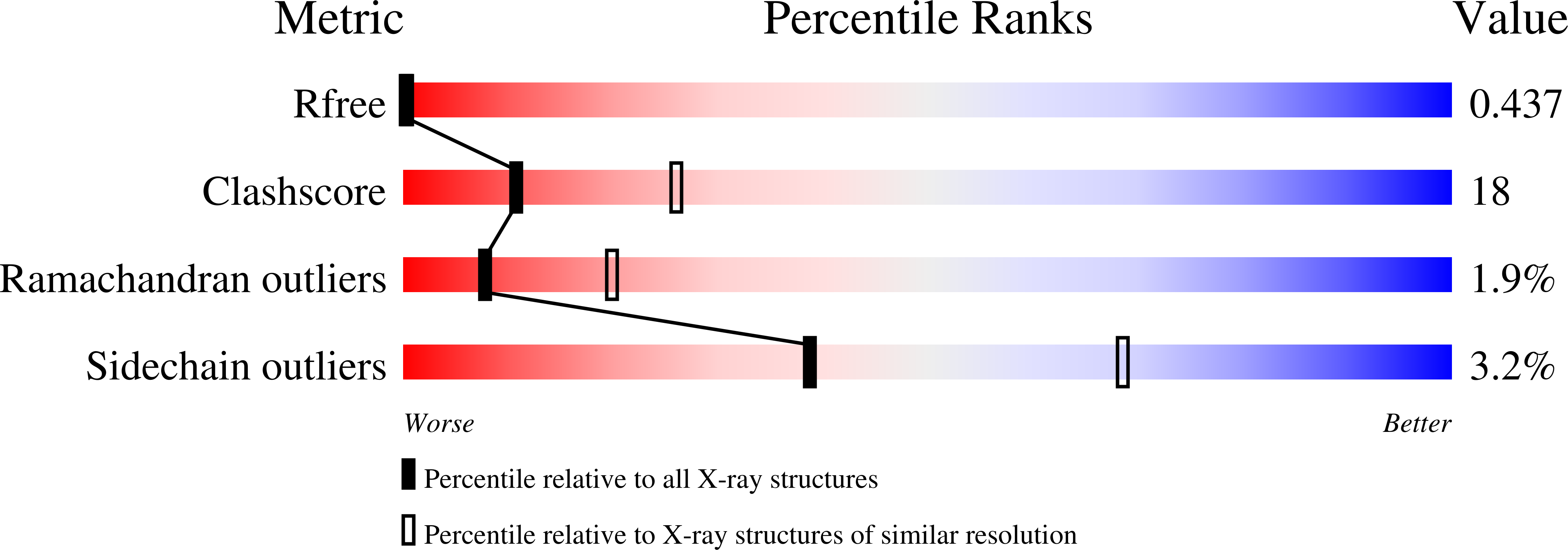Insights into Strand Displacement and Processivity from the Crystal Structure of the Protein-Primed DNA Polymerase of Bacteriophage phi29
Kamtekar, S., Berman, A.J., Wang, J., Lazaro, J.M., de Vega, M., Blanco, L., Salas, M., Steitz, T.A.(2004) Mol Cell 16: 609-618
- PubMed: 15546620
- DOI: https://doi.org/10.1016/j.molcel.2004.10.019
- Primary Citation of Related Structures:
1XHX, 1XHZ - PubMed Abstract:
The DNA polymerase from phage phi29 is a B family polymerase that initiates replication using a protein as a primer, attaching the first nucleotide of the phage genome to the hydroxyl of a specific serine of the priming protein. The crystal structure of phi29 DNA polymerase determined at 2.2 A resolution provides explanations for its extraordinary processivity and strand displacement activities. Homology modeling suggests that downstream template DNA passes through a tunnel prior to entering the polymerase active site. This tunnel is too small to accommodate double-stranded DNA and requires the separation of template and nontemplate strands. Members of the B family of DNA polymerases that use protein primers contain two sequence insertions: one forms a domain not previously observed in polymerases, while the second resembles the specificity loop of T7 RNA polymerase. The high processivity of phi29 DNA polymerase may be explained by its topological encirclement of both the downstream template and the upstream duplex DNA.
Organizational Affiliation:
Department of Molecular Biophysics and Biochemistry, Yale University, New Haven, Connecticut 06520, USA.




















